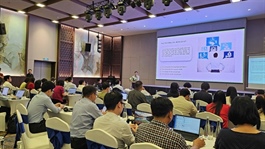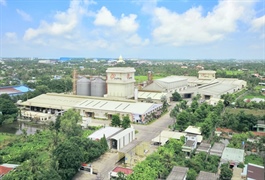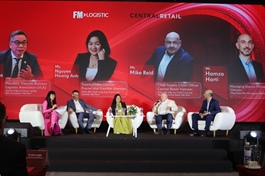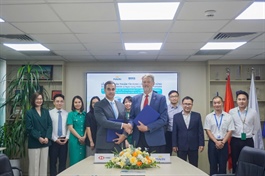Perfecting legal corridor to boost high-tech sector
Perfecting legal corridor to boost high-tech sector
The Ministry of Science and Technology and the National Assembly's Committee on Science, Technology, and Environment held a workshop in HCM City on September 23 to collect comments on draft amendments to the Law on High Technology.
The draft consists of six chapters and 29 articles, reducing six articles, with some changes compared to the current law. It is expected that the amended law will be submitted to the National Assembly for consideration and approval at its upcoming 10th session.
The workshop was co-chaired by Vu Hai Quan, permanent Deputy Minister of Science and Technology, and Nguyen Phuong Tuan, Vice Chairman of the NA Committee on Science, Technology and Environment, with the participation of NA deputies, experts, scientists, and businesses.
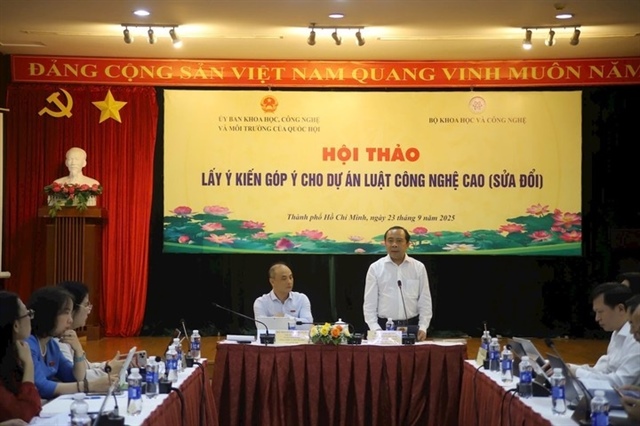
The workshop was co-chaired by Vu Hai Quan, permanent Deputy Minister of Science and Technology, and Nguyen Phuong Tuan, Vice Chairman of the NA Committee on Science, Technology and Environment. Photo: MST |
According to Quan, the amendments aim to concretise the Party's policies, especially Politburo Resolution No. 57-NQ/TW dated December 2024 on breakthroughs in science and technology development, innovation, and national digital transformation. The resolution identifies high technology as a driving force for the country's industrialisation and modernisation. Therefore, the amended law needs to create a transparent, stable, and attractive legal corridor; promote research, development, application and transfer of high technology; and encourage domestic and foreign enterprises to invest.
The draft inherits as much as possible of the relevant regulations, and at the same time adjusts according to the new management thinking: effective management instead of process management. The law focuses on attracting social resources and encouraging businesses to fund research and development (R&D) in high technology, instead of relying solely on the state budget.
The law focuses on six policy groups, including completing the concept and criteria of high technology; redesigning the system of policies and beneficiaries of priority policies, incentives, and investment support; encouraging the development of the high-tech ecosystem; supplementing new regulations on high-tech park and high-tech urban models; supplementing and completing state management regulations on high technology, management, inspection, supervision, and efficiency assessment mechanisms; and supplementing regulations on requirements for comprehensive digital transformation of high-tech activities.
At the event, participants highly appreciated the draft law for covering the basic necessary contents. However, many opinions said that it is necessary to supplement clearer regulations on incentive mechanisms, criteria for establishment and operation of high-tech zones, high-tech urban areas, and high-tech agricultural zones, associated with ensuring security and safety, especially for foreign-invested projects.
They also proposed separate provisions on the development of high-tech industries, strategic industries, and supporting industries, serving the development of high-tech industries, with specific policies such as improving business capacity, supporting participation in the supply chain, and encouraging the production of components and core materials.
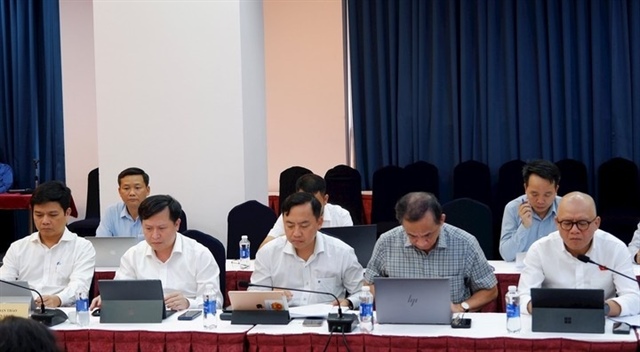
Photo: MST |
In addition, there should be policies to encourage domestic enterprises to transfer technology after mastering, pay attention to the development of high-tech industries and strategic technologies, and have incentive mechanisms that are strong, clear, and consistent with relevant laws to increase feasibility and consistency in implementation.
Tuan emphasised, “To have a good and feasible law, it is necessary to first finalise the concepts, terminology, and application criteria clearly and easily. However, it is also important to note that in all issues of technology transfer, digital transformation, AI, high technology, and people are still the core factor. Therefore, it is necessary to have a strong enough policy to train, attract, and retain high-quality human resources, but must avoid overlapping with the provisions of other laws.”
- 15:51 25/09/2025





